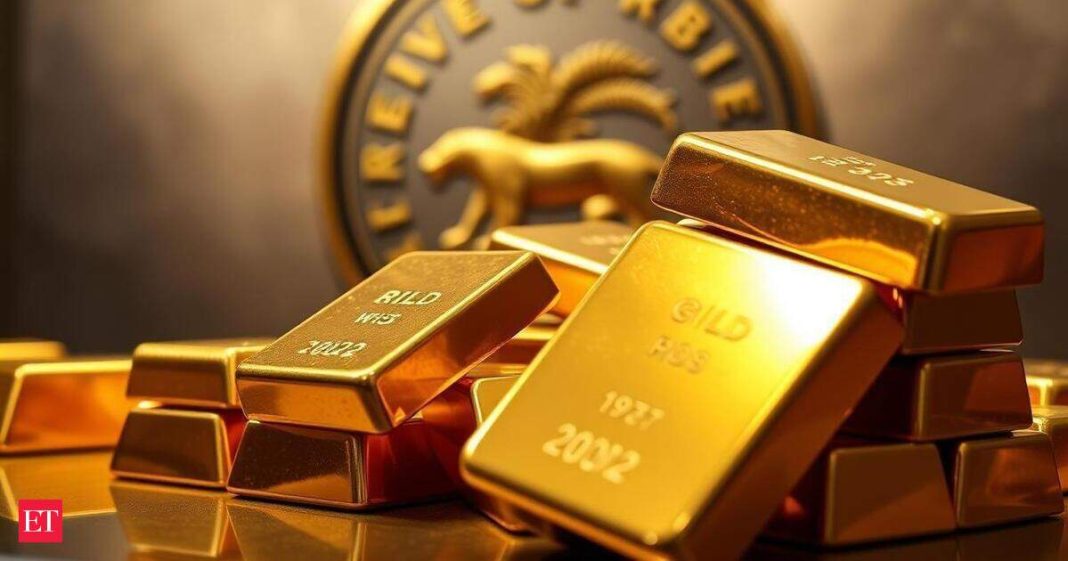Key Takeaways
- Gold has surpassed the euro to become the world’s second-largest reserve asset
- Central banks are buying gold at record prices despite 60% price surge
- Major institutions forecast gold reaching $4,400-$5,000 per ounce by 2026
- This represents a structural shift in global reserve management strategy
In a historic financial milestone, gold has overtaken the euro to become the second-largest global reserve asset, trailing only the US dollar. This shift comes as central banks worldwide continue accumulating gold despite prices hitting record highs of over $4,300 per ounce.
Gold now represents approximately 20% of global official reserves, while the euro accounts for 16%. The US dollar maintains its dominant position with 46% share. This rebalancing reflects growing caution among nations about traditional fiat currencies and increasing geopolitical uncertainties.
Record Gold Prices and Central Bank Demand
Gold futures for December delivery recently crossed $4,300 per ounce, marking a stunning 60% increase since the beginning of 2025. Despite these elevated prices, central banks continue their aggressive purchasing, viewing gold as a critical safe-haven asset.
Countries including Poland, Turkey, China, and India have steadily increased their gold reserves over the past two years. Even smaller nations like Kazakhstan, Bulgaria, and El Salvador are joining this trend, signaling a broad-based shift in reserve management strategies.
Major Gold Holdings by Country
The United States maintains the largest official gold reserves globally, followed by Germany’s Deutsche Bundesbank. Together, these two nations hold more than 8,000 metric tons—nearly half of all official reserves worldwide.
Top 10 Gold Holdings (2025):
- United States: 8,133.5 tonnes (74.9% of forex reserves)
- Germany: 3,351.6 tonnes
- Italy: 2,451.9 tonnes
- France: 2,437.0 tonnes
- Russia: 2,332.7 tonnes (29.5% of forex reserves)
- China: 2,292.3 tonnes (6.5% of forex reserves)
- Switzerland: 1,039.9 tonnes
- India: 876.2 tonnes (recently exceeded $100 billion value)
- Japan: 846.0 tonnes
- Netherlands: 612.5 tonnes
Why Central Banks Keep Buying at High Prices
Three key factors drive central bank gold accumulation:
Geopolitical Uncertainty: Ongoing conflicts, trade tensions and economic shifts make gold attractive as it isn’t tied to any single government.
Currency Risk Management: Countries seek to reduce US dollar dependence and diversify reserve assets.
Liquidity Needs: Gold can be quickly bought or sold compared to other investments, providing flexibility during crises.
Gold Price Forecast for 2026
Major financial institutions maintain bullish gold price projections for 2026:
- HSBC: $4,600 per ounce by end-2026
- Bank of America & Societe Generale: Potential touch of $5,000 per ounce
- Goldman Sachs: Approximately $4,900 per ounce
- ANZ: Peak near $4,600 mid-year with some decline later
These forecasts are supported by expected Federal Reserve rate cuts, sustained central bank demand, and ongoing geopolitical tensions.
Investment Implications
Gold’s transformation from temporary hedge to core reserve component suggests prices may remain elevated for the foreseeable future. With central banks consistently buying rather than selling, gold’s market dominance appears secure.
For investors, this structural shift underscores gold’s role as a long-term store of value rather than just a commodity. Its resilience during uncertainty makes it essential for diversified portfolios.
Future of Global Reserves
Gold’s ascent to the second-largest reserve position represents a long-term strategic shift, not a temporary market reaction. As more countries prioritize gold holdings, the global financial system may become less dependent on any single currency, potentially reducing systemic risk.
This trend indicates that gold’s importance in international finance will likely continue growing, reinforcing its status as a fundamental protective asset for both nations and individual investors.




